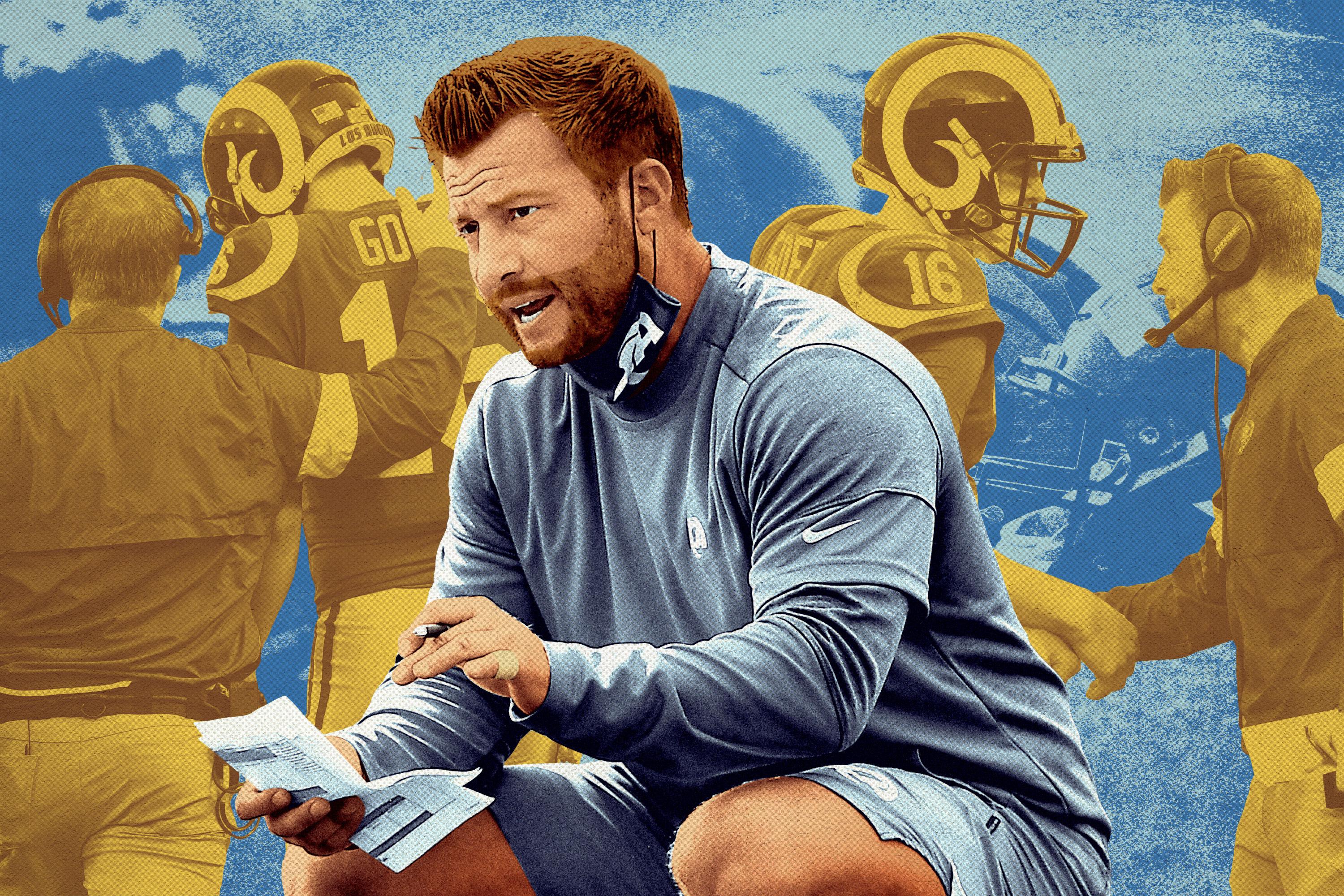
Week 4, 2018: The Los Angeles Rams beat the Minnesota Vikings, 38-31. They scored five touchdowns and collected 556 yards of offense to improve to 4-0. The game was part of an 8-0 start to a season that ends in a Super Bowl appearance.
Week 4, 2019: The Rams lose to the Buccaneers, 55-40, at home. Though it was a high-scoring game, it was the start of a three-game losing streak that included a 20-7 loss to the 49ers in which the Rams gained only 157 yards of total offense, the lowest ever under coach Sean McVay. The team finished 9-7 and missed the playoffs.
In the past two seasons, the Rams have been a revolutionary force with an expertly designed offense overseen by a brilliant young coach, and then a disappointment for failing to maintain those high standards. Entering Week 4 of 2020, the Rams are 2-1 and look like a pretty good football team, not perfect, but well coached with good players. Considering the whiplash the team felt from its Super Bowl run in 2018 to missing the playoffs last season, it’s a pretty comfortable place to be.
“I think we’re a better 2-1 team than we were at 3-0 [last year],” McVay said Monday on his radio show. “You can get so caught up in some of the results that you lose sight of the process along the way. I do believe we’re a better team than we were last year at this time.”
There are several reasons the Rams look improved, but better offensive line play is the best place to start. The Rams are currently ranked 13th in ESPN’s pass-block win rate, a metric based on how often linemen sustain their blocks for at least 2.5 seconds. They’re also ranked third in run-block win rate, a similar stat based on whether offensive linemen stop oncoming rushers from pushing the pocket, disrupting a running lane, or making a tackle within 3 yards of the line of scrimmage (both stats are calculated using player-tracking information). Put it all together, and you have an offensive line that’s playing at a high level, allowing for the Rams’ offense to get back on track. Run blocking is crucial in McVay’s offense because the goal is for passing plays to look the same as the running plays, which is why play-action is such a big part of what the Rams do.
The blocking needs to be solid for all of that to work. Defenses started to realize this late in the 2018 season and slowed down the Rams offense by putting six defenders on the line of scrimmage, forcing everyone on Los Angeles’s line into one-on-one blocking matchups. The Patriots did it most successfully in the Super Bowl, but teams like the Lions had used similar tactics late in the regular season.
Defenses kept deploying the tactic in 2019, a season when the offensive line took a step back. In 2019, the Rams finished 22nd in pass-block win rate. Run-block win rate is a new statistic this season, but the Rams ranked 19th in Football Outsiders’ adjusted line yards, another run-blocking stat, last season. The reason wasn’t a mystery. The 2019 line suffered several significant injuries. Two of the Rams’ Week 1 starting linemen—center Brian Allen and left guard Joe Noteboom—had to go on injured reserve midseason and another, right tackle Rob Havenstein, missed seven games. Only left tackle Andrew Whitworth played all 16 games. Two young linemen who stepped in last year, Austin Corbett and Austin Blythe, are playing again this year at right guard and center, respectively.
“You’ve seen what we talked about last year has come to fruition,” Whitworth said last Friday. “A lot of these guys that we believed in were young and just had no experience and needed to get out there and play in real games and get a little trial by fire and get out there and experience things, and it’s started to come together.”
Last season, Jared Goff took as many sacks (22) as he threw touchdowns, but so far this year, the Rams’ offense is playing much more aggressively. Bootlegs have always been a big part of McVay’s offense, but instead of rolling out to get away from pressure, Goff is rolling out to gain an advantage and get defenders moving in the wrong direction like he did on a 28-yard touchdown to tight end Tyler Higbee against the Eagles.
He’s also trusting his protection. On his 16-yard touchdown pass to Cooper Kupp in the fourth quarter against the Bills, as the Rams tried to erase a 25-point deficit, Goff calmly stepped up in the pocket and bought enough time for Kupp to chip a defender before getting into his slant. The receiver blocking is the flourish that sells the play-action, and you can see Bills cornerback Tre’Davious White losing step on Kupp when he thinks for a split second that it’s a run play.
It’s telling that it took us this long to get to Goff. Quarterback is the most important position in football, so when everything was going right for the 2018 Rams, Goff was seen as one of their offensive catalysts. Likewise, when last year’s offense regressed, he took a large portion of the blame. It’s more clear now that the proper assessment of Goff’s play is somewhere in between those two seasons. McVay’s scheme can make Goff look excellent by giving him relatively easy completions and, when the rest of the offense is playing well around him, Goff is plenty capable of thriving. He’s currently second to last among starting quarterbacks in intended air yards (6), which measures the distance of each of his pass attempts, but he has the lowest differential among starters between his intended air yards and his completed air yards (0.1). Simply put, most of Goff’s throws are short, but that’s by design, and he’s completing a lot of them, while taking his shots downfield when the right opportunity is there. The result is that he currently leads the league in yards per pass attempt (9.6).
“I thought [the Bills game] was his best game. I didn’t think it was even close,” McVay said Monday. “When you look at the caliber of play, I thought his pocket movement, his ability to navigate and be able to move while keeping his eyes down the field and make some big-time throws was outstanding.”
The Rams have already had an injury on the offensive line this year: Noteboom was placed on injured reserve last week with a calf injury and will miss at least three weeks. The Rams have turned to second-year pro Dave Edwards in his place. His performance is worth watching, since very few offenses can withstand multiple injuries to a position group without struggling, especially when that position group is as critical to overall function as the offensive line is in Los Angeles.
Week 4, 2020: The Rams have put up at least 400 yards of offense in every game so far, are first in offensive DVOA and seventh in DVOA overall. Their only loss was to a good Bills team in a game in which they showed they could play well on offense when behind, something last year’s team struggled to do. They’re also playing in an NFC that’s still anyone’s game, with top teams like the Seahawks and Packers questionable defensively. The Rams may have come back down to earth, but they’ve landed in a good spot.

